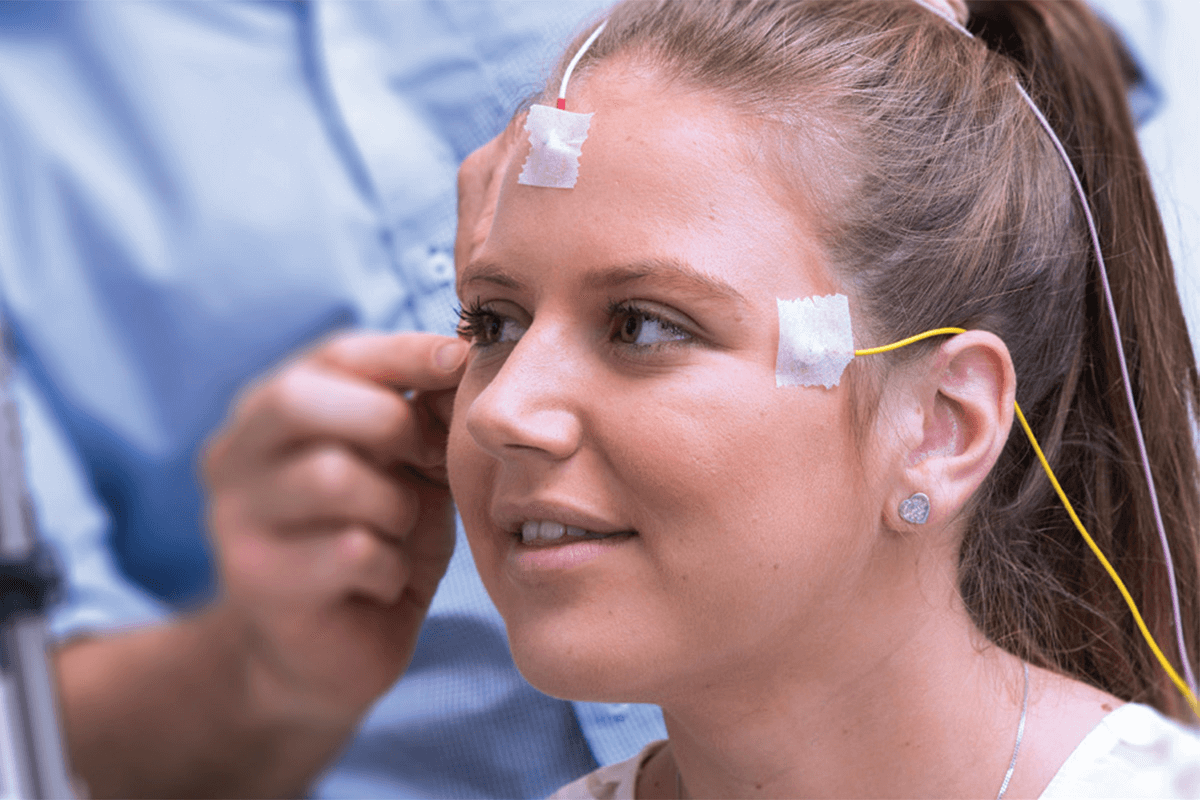What is electrophysiology?
Electrophysiology measures and analyses electrical activity in cells and tissues. Ophthalmologists use electrophysiology testing to look at how the retina and optic nerve are functioning.
By providing objective information about the electrical activity in and around the eye, electrophysiology helps ophthalmologists make accurate diagnoses, monitor disease progression and assess treatments.
Diagnosing eye conditions
Electrophysiology testing is particularly helpful for patients where standard clinical tests are inconclusive. Traditional eye tests rely on patients telling clinicians what they can (or cannot) see. These subjective tests can be unreliable, and sometimes impossible, particularly when diagnosing conditions in babies and young children. Sometimes conditions present with atypical features which makes the diagnosis unclear. By testing eye function using objective measurements, electrophysiology can diagnose eye conditions which might otherwise go undetected.

More accurate results with electrophysiology
Electrophysiology tests provide objective measurements of the electrical activity in the visual system. They offer quantitative data, reducing the potential for bias and allowing for more accurate assessment of eye function.
Early detection
Electrophysiology tests can detect subtle changes in the electrical signals of the eye before visible symptoms or structural changes occur. This enables early detection and monitoring of various eye diseases, including retinal degenerations, optic nerve disorders, and inherited retinal diseases. Early intervention can lead to better treatment outcomes and help save sight.
Accurate diagnosis
Electrophysiology tests help differentiate between various eye diseases that may present in a similar way. For example, one test can distinguish between different types of retinal dystrophies or help identify the underlying cause of unexplained vision loss. This helps doctors tailor treatments for the best patient care.
Best treatment options
Electrophysiology tests are valuable for assessing the effectiveness of treatments for eye diseases. By objectively measuring changes in the electrical responses of the visual system over time, these tests can determine whether a particular treatment is slowing down a disease or improving visual function.
Research and advancements
Ongoing research in electrophysiology helps uncover new insights into eye diseases and paves the way for the development of new diagnostic techniques and treatments.
Queensland Electro-Diagnostic & Imaging Centre
Thanks to a generous donation and additional fundraising through our ‘Help us Help Max’ and Bridge to Brisbane campaigns, QEI’s Electro-Diagnostic & Imaging Centre has been upgraded with the latest testing equipment. Learn more about the testing available at the Queensland Electro-Diagnostic & Imaging Centre here.